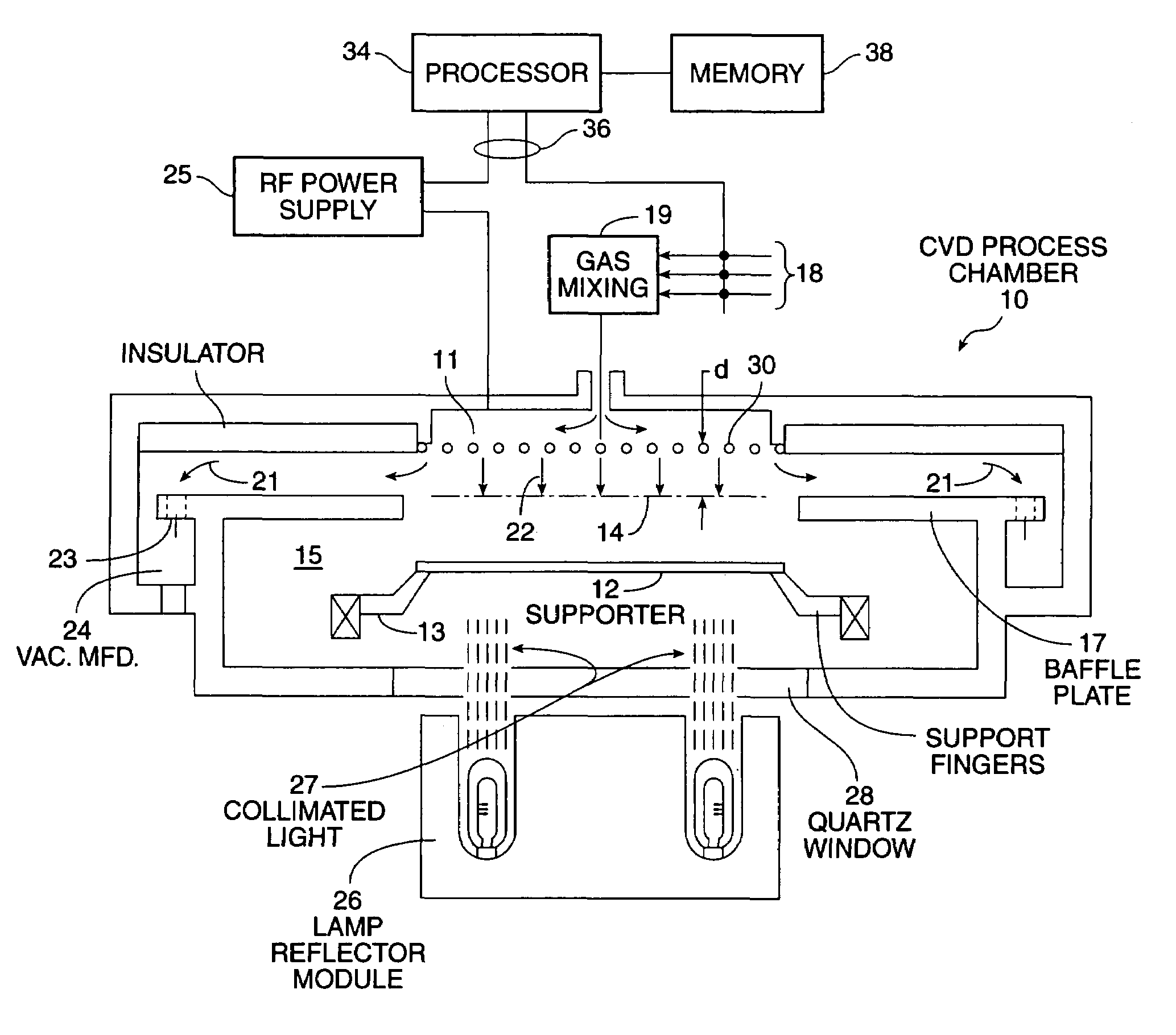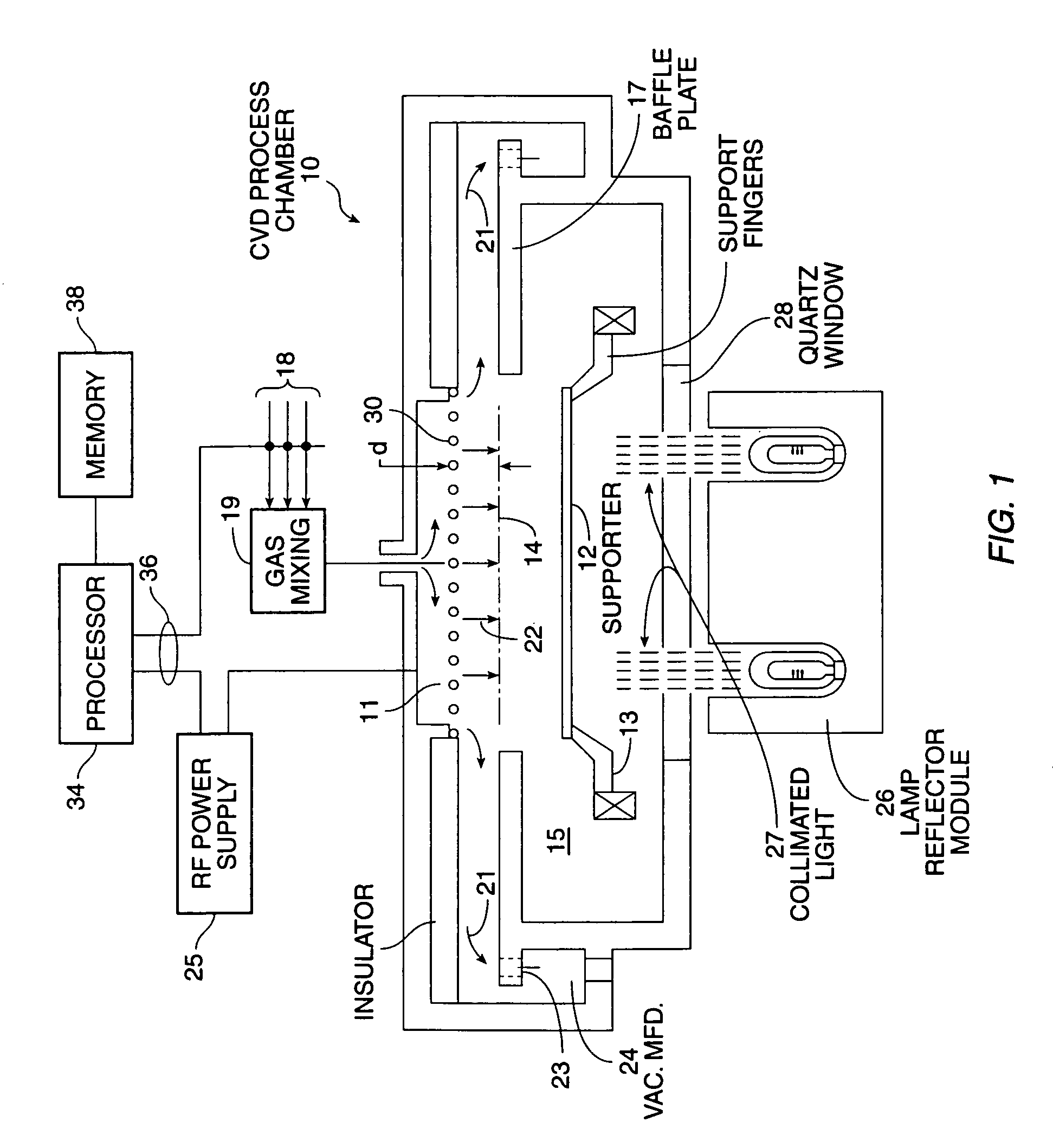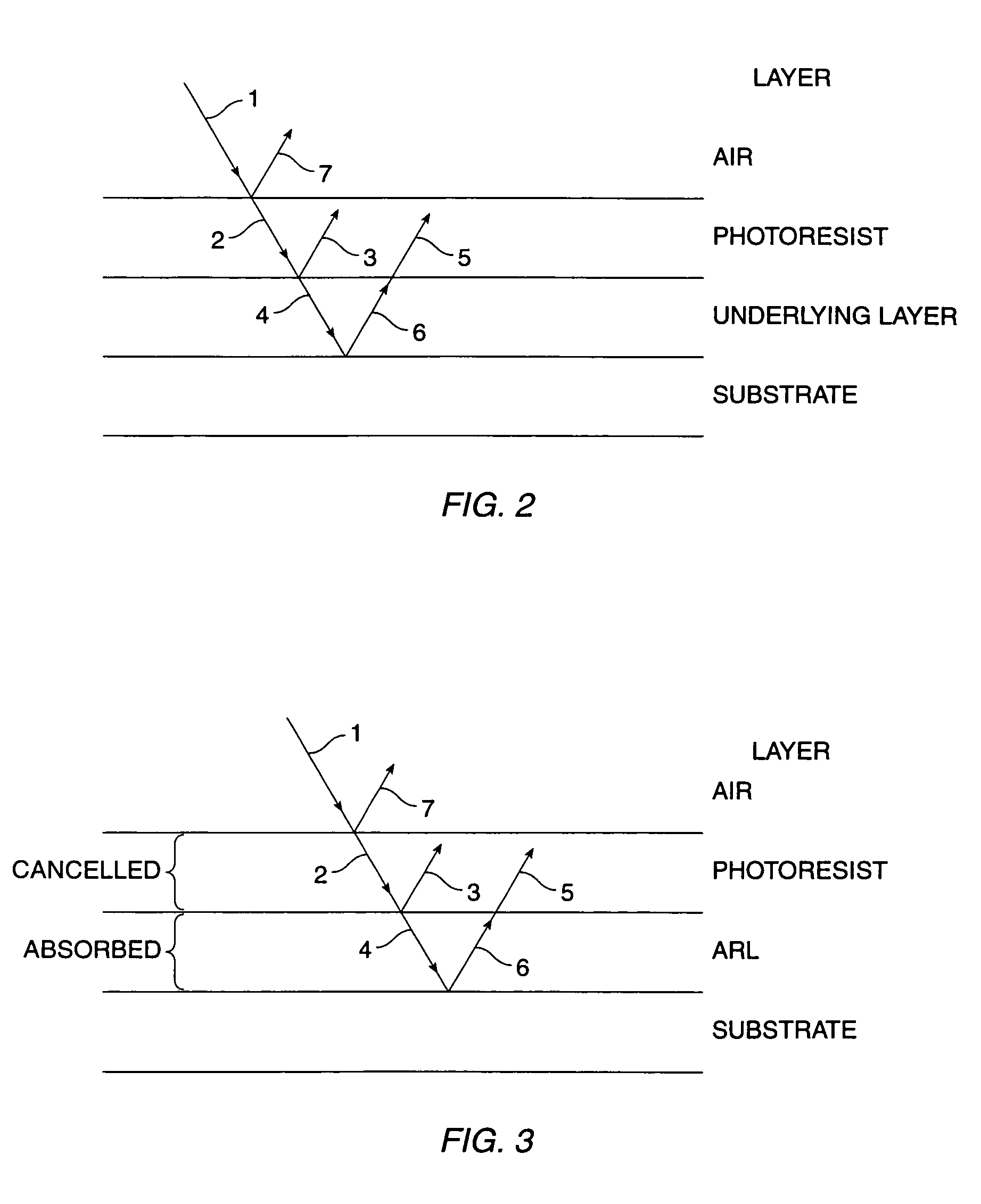Method and apparatus for depositing antireflective coating
a technology of anti-reflective coating and anti-reflective coating, which is applied in the direction of photomechanical equipment, coatings, instruments, etc., can solve the problems of destroying the resulting semiconductor devices, requiring more process steps, and exposing some of the photoresist beneath the opaque portions of the mask, so as to reduce the deposition rate of plasma-enhanced silane oxide, stable process, and low deposition rate
- Summary
- Abstract
- Description
- Claims
- Application Information
AI Technical Summary
Benefits of technology
Problems solved by technology
Method used
Image
Examples
Embodiment Construction
[0019]A preferred embodiment of the process for depositing an ARL according to the present invention comprises apparatus for and the use of plasma-enhanced chemical vapor deposition (PECVD) technique to bring about a chemical reaction between SiH4 and N2O, in the presence of He, with the SiH4 to N2O ratio being between about 0.5 to 3.0 and preferably 1.0. The process further includes the addition of NH3, N2, and He gases. FIG. 1 illustrates one embodiment of a simplified, parallel plate PECVD system 10 having a vacuum chamber 15 in which the antireflective layer can be deposited according to the present invention.
[0020]System 10 contains a gas distribution manifold 11 for dispersing the deposition gases to a substrate, not shown, but which is placed flat on the supporter 12. The supporter 12 is highly heat-responsive and is mounted on supports 13 so that supporter 12 (and the substrate supported on the upper surface of supporter 12) can be controllably moved between a lower loading / ...
PUM
| Property | Measurement | Unit |
|---|---|---|
| pressure | aaaaa | aaaaa |
| pressure | aaaaa | aaaaa |
| temperature | aaaaa | aaaaa |
Abstract
Description
Claims
Application Information
 Login to View More
Login to View More - R&D
- Intellectual Property
- Life Sciences
- Materials
- Tech Scout
- Unparalleled Data Quality
- Higher Quality Content
- 60% Fewer Hallucinations
Browse by: Latest US Patents, China's latest patents, Technical Efficacy Thesaurus, Application Domain, Technology Topic, Popular Technical Reports.
© 2025 PatSnap. All rights reserved.Legal|Privacy policy|Modern Slavery Act Transparency Statement|Sitemap|About US| Contact US: help@patsnap.com



